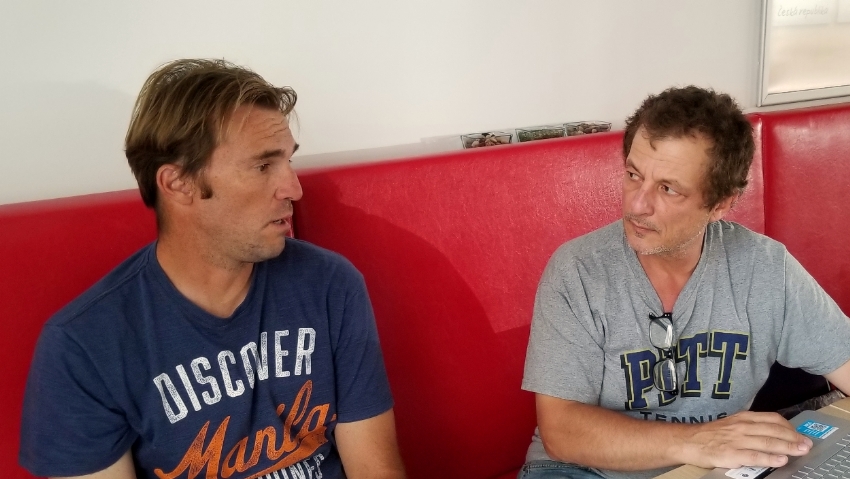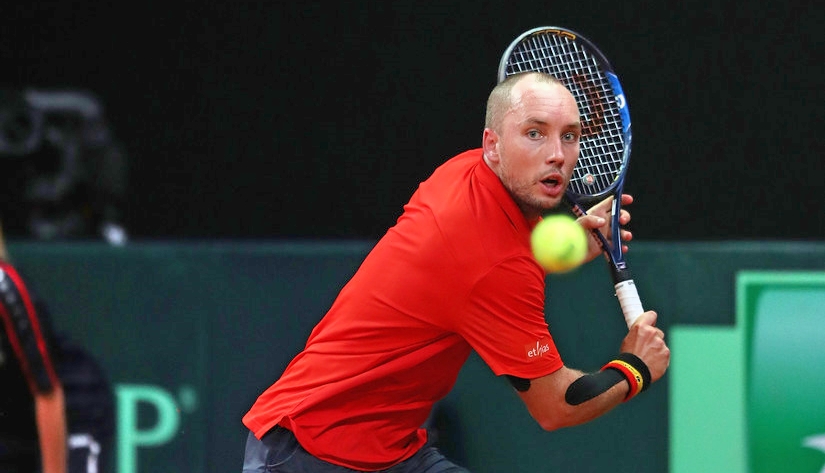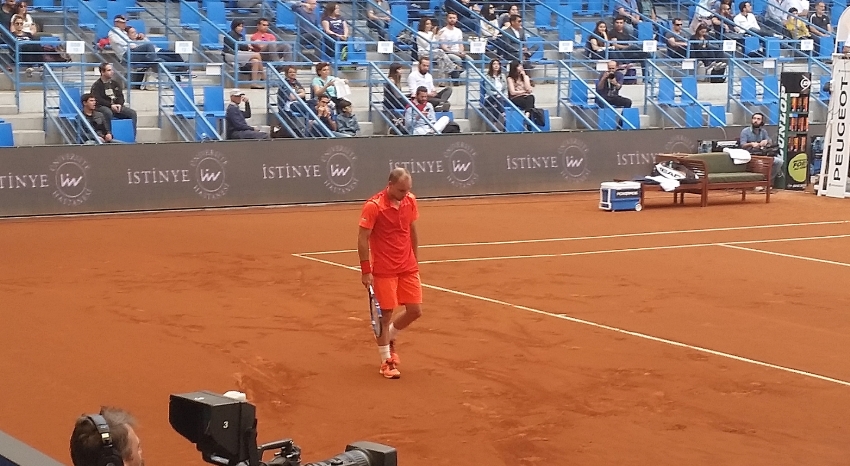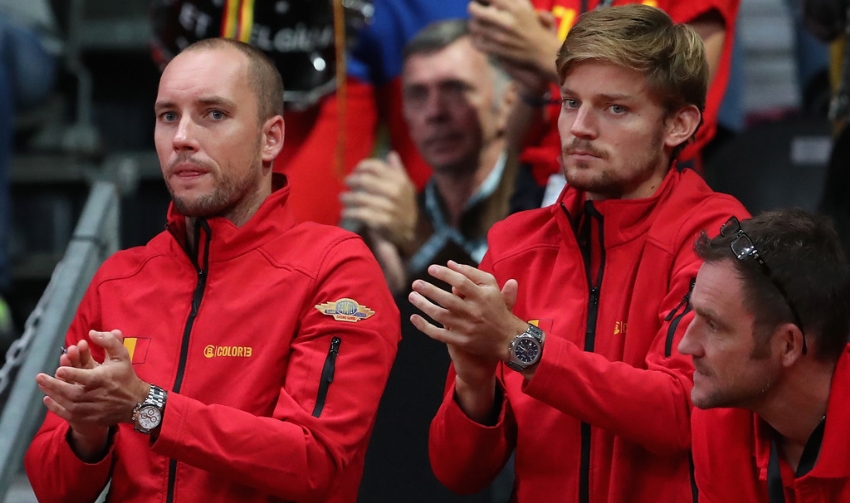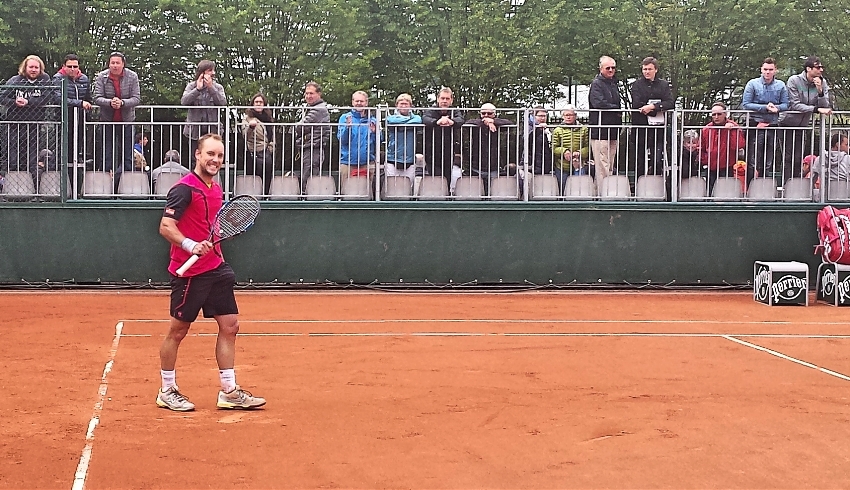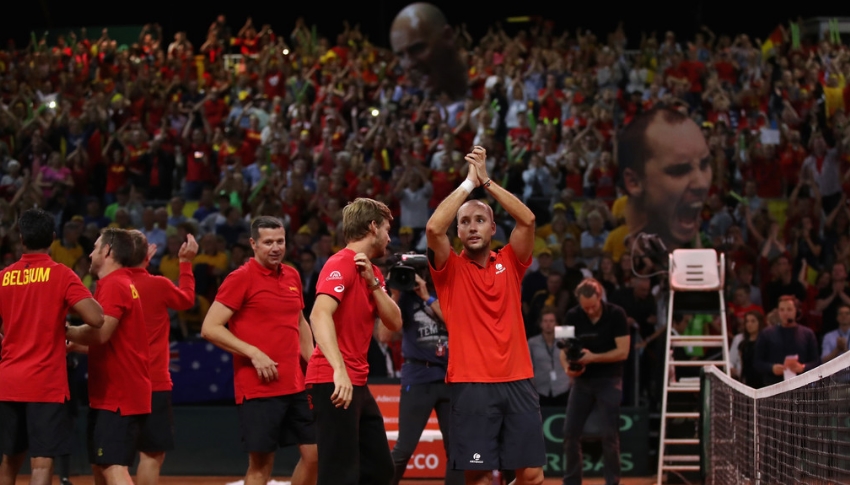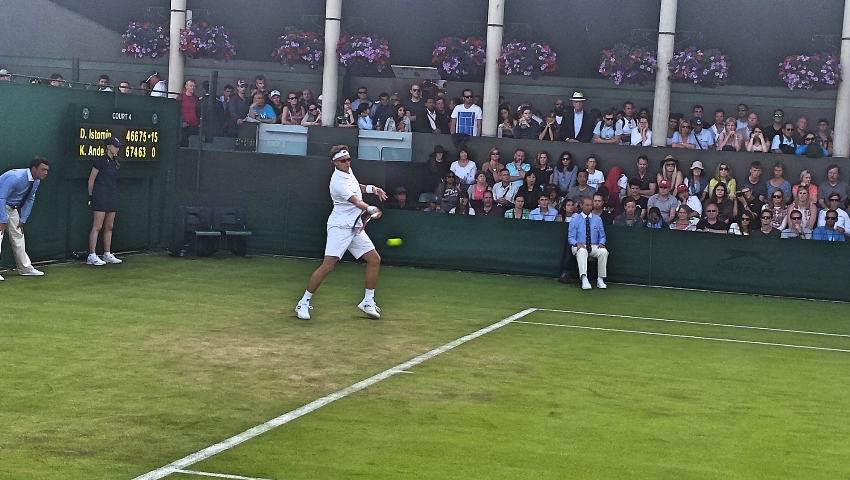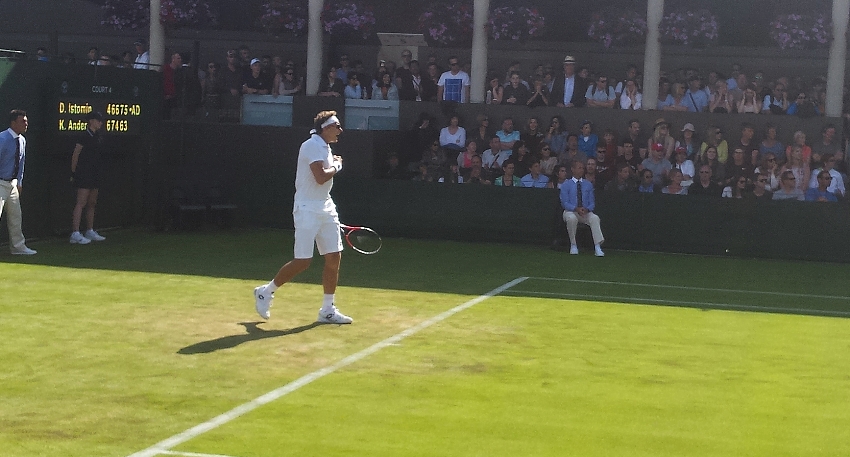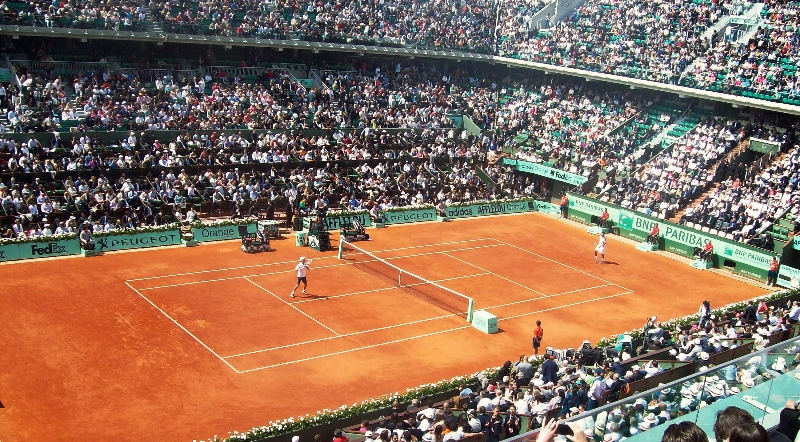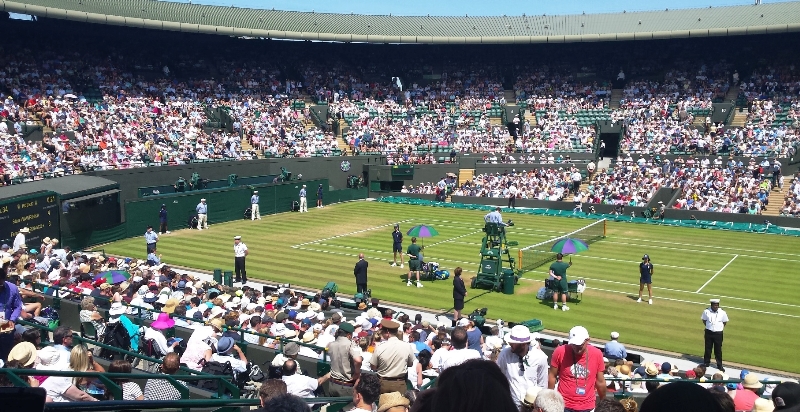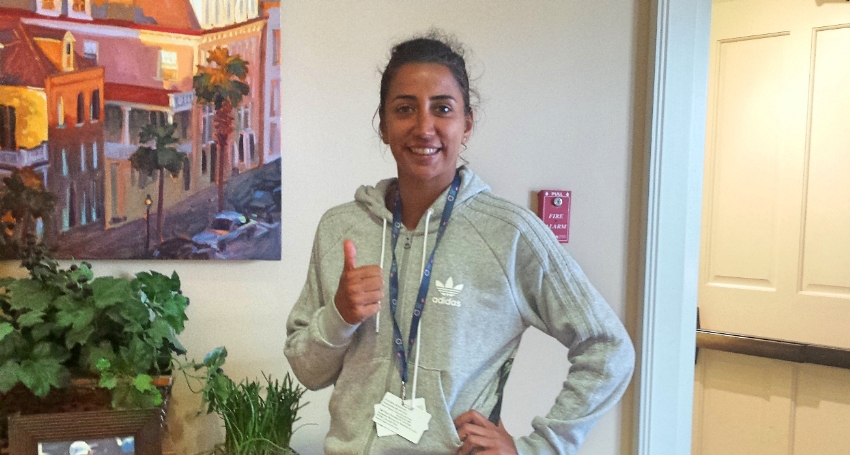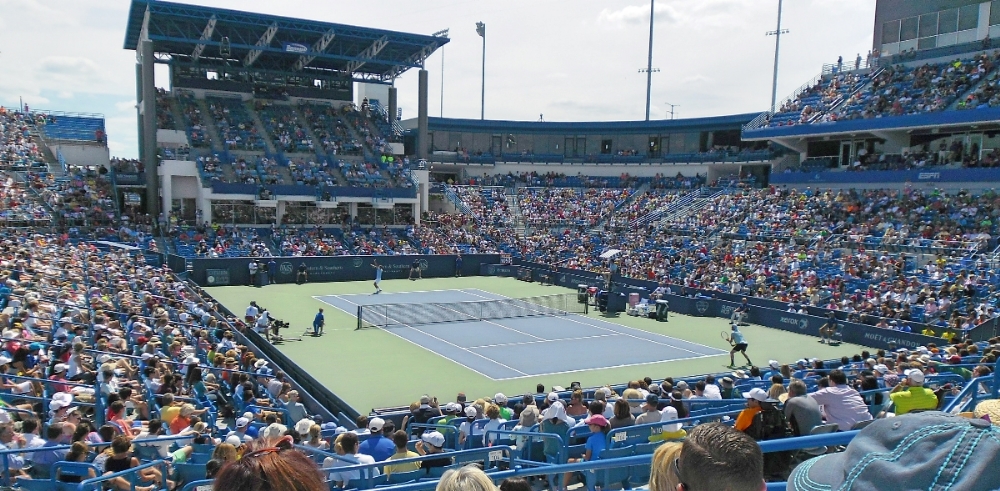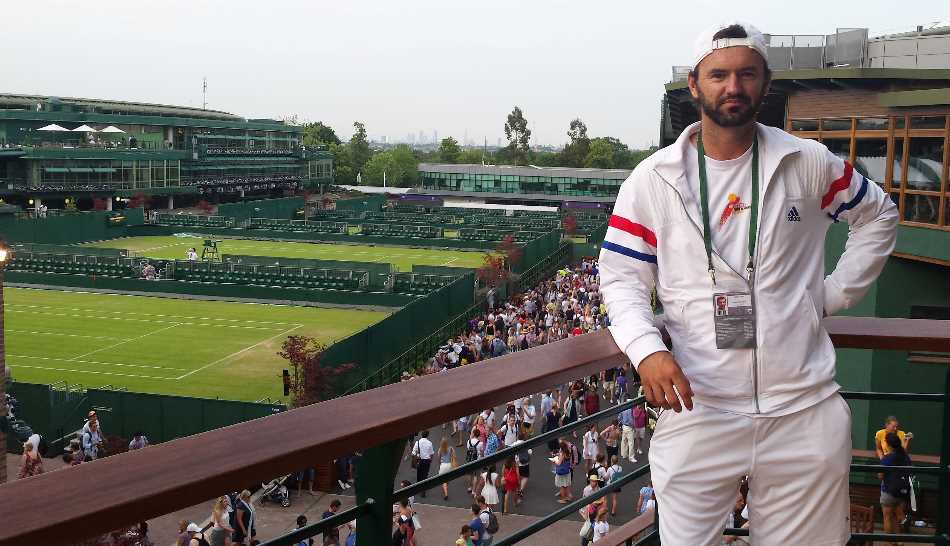I have been following Steve Flink’s writings ever since my lifelong passion for tennis began in my childhood years, and continued throughout my playing and coaching years. One of the leading journalists and historians in the tennis arena, Flink’s vast knowledge of our sport is second to none. Moreover, Mr. Flink will be inducted on July 22 of this year at the International Tennis Hall of Fame in Newport, Rhode Island. You can therefore imagine what a great honor it was for me when I got to meet him at the 2016 Wimbledon, the place where his passion for tennis began to take root in the early 1960s. The following day, I had lunch with him during which we chatted, in some detail, about some of the great matches and memorable events in the history of tennis. It was one of the most stimulating conversations I have ever had as a tennis lover, and of course, it helped that those were two of Mr. Flink’s favorite topics to discuss. He did, after all, write two fascinating books (both must-reads for any tennis fan) entitled The Greatest Tennis Matches of the 20th Century (1999) and The Greatest Tennis Matches of All-Time (2012).
In our first chat, we covered a variety of topics such as some of the unforgettable matches in history, the usage of correct terms when discussing historical accomplishments, and the ins and outs of the discussion surrounding the “Greatest of All-time” debate. Below is that chat, only minimally edited for clarification purposes.
Notice: This conversation was also translated into Turkish and initially published in the post-Wimbledon-2016 issue of the magazine Tenis Dunyasi. This is the original English version.
——————–
Thank you for taking the time! Let’s start with where you first caught the “tennis bug.” Can you identify such a moment in your life?
Yes! Right where we are sitting! I was 12 about to turn 13. It was 1965. I had seen a little tennis, I watched the Davis Cup finals for a couple of years in a row in 63 and 64, US vs Australia which was on public broadcasting in the States. I enjoyed watching it but it hadn’t gripped me the way it did later. I mean I was interested in those matches and those guys played, I got to watch Dennis Ralston and I liked him a lot, but it was not until I came out here in 1965 that I caught the bug. My father brought me out here and I was 12, about to turn 13. I came a bunch of times in 65 including the final. But I first came on a cloudy day during the first week and it just [pauses]… just… [shakes his head] completely engulfed me, I guess that would be the word. Then, form that point on, I followed it every day in the newspapers.
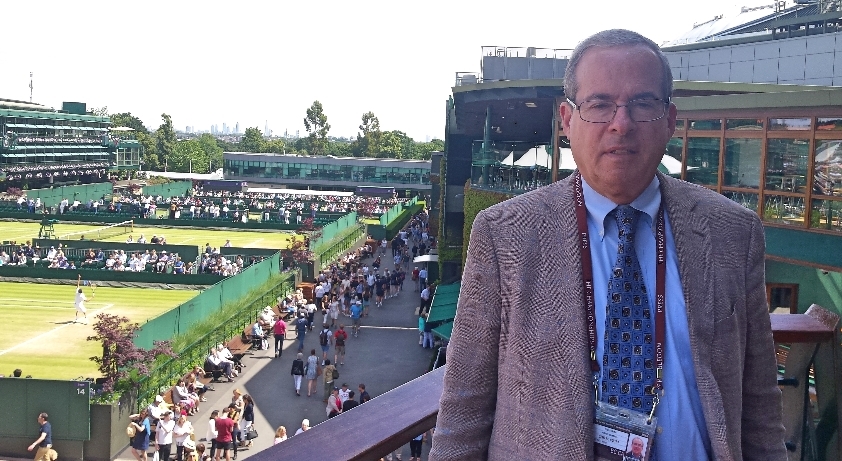
Later, I was back in New York, my parents were divorced then. I went to the US Nationals at Forest Hills, which later became the US Open. I went a bunch of times there. My passion grew out of those experiences. The summer of 1965 was the beginning of my passion for tennis.
As someone with a unique insight of a tennis historian on the matter of using correct terms: there are few terms that are often used out of context or incorrectly. For example, when a player wins one of the four elite tournaments, is it correct to say they won a Grand Slam, a Grand Slam event, or a Major? Also, isn’t it incorrect (or unnecessary) to say the “Calendar Year Grand Slam” since the term Grand Slam’s meaning has historically included the completion of that achievement in the same year? Many people, including some of the top players, now say call Majors “Grand Slams” as in for example, saying that Djokovic won a Grand Slam when he won Roland Garros, or that Roger Federer has won “17 Grand Slams.” Along those lines, which is it when the score is 6-6, is it a “tiebreaker” or a “tiebreak”?
Ok, bunch of points to make there. People say – and I even use it sometimes just to make clear and to not have anybody be confused by what the achievement is – “Calendar Year Grand Slam.” In a sense, it’s repetitive, but I think people use that as a clarification means. But obviously the “Grand Slam” is the four Majors in one year. What happened was, players started getting caught saying, way back in the 80s and early 90s, things like “I know next year I am going to win a Grand Slam,” I remember Jennifer Capriati saying this. What she really meant was “a Grand Slam Event.” This is one of the few areas where I disagree with the late Bud Collins. He was a strong believer in that you could absolutely and only call it a Major. I think if you say “Grand Slam Event” or “Grand Slam Championship,” it’s very clear, there is no mistaking it. So, I think these are interchangeable with “Major.” When I write, I use both. Sometimes I call it a Major, sometimes a Grand Slam Event, but the point is that they are both acceptable. I know other historians agree with me that as long as you get that word “event” or “championship” in there, you make the distinction from “Grand Slam” which is only one thing, winning all four Majors in one year. Now, the “Calendar Year” – and I know in some ways it’s a mistake and people claim it is – is added just so people understand, I think, the difference between that and Djokovic winning four straight over two years for example.
I try to be a bit more flexible about these terms, but Bud became very adamant about that, not in the early years, but let’s say, by the last 20 years of his life. He was more and more adamant as the years went by, and I respected him greatly on it, but it reminded me of his feeling about “tiebreak” vs “tiebreaker.” Again, I don’t agree, I think either of them is fine. There is no confusion in the public’s mind. What happened was, and Bud was absolutely right about this, “tiebreaker” was initially what Jimmy Van Alen, the inventor of the tiebreaker, named it. From the time that it was first used at the Majors in 1970, that is how we referred to it. Then, somewhere along the lines, I would say in the late-80s or early-90s, certainly by mid-90s, people from the ITF and other tennis-governing bodies adopted the term “tiebreak.” I did not have a problem with that. I thought “ok, that’s fine, there is not a big difference.” I would use either one personally, I don’t see how there could be any confusion between the two. But again, Bud felt very strongly about it, I respectfully disagreed with him. These were probably the only two things I ever disagreed with him in all the years that I knew him. “Tiebreak” or “tiebreaker,” either is fine.
Speaking of Bud Collins, is there a special dialogue that makes you say “yes, that was Bud Collins” or an anecdote with him that you particularly remember?
Wow, that’s tough! There were so many experiences with him. I think of his humor, his wit. I am not sure if a single one stands out, but one amusing story that makes me think of him was when I had to play tennis against him. He would always put a lot of pressure on you, he would chip and charge a lot, get to the net. He was much better player than he led on by the way. Ground strokes were not that great, but he volleyed beautifully and had a good kick serve. He was tough to play against. So I would start to press on my ground strokes, but I also would start double-faulting. We played a bunch of times, many times over here in England. One particular time, when I began pressing and double-faulting again, he said to me “Steve, just like Hazel Wightman** always said, you can’t double-fault when you get your first serve in.” I thought that summed him up. It was actually good valuable advice, his way of saying “get more first serves in and you won’t fall into that trap.” But only he could say it in such an amusing way.
** “Mrs. Wightie” (1886-1974) was an American tennis player who won 17 Major titles in singles and doubles in the early 1900s.
A second story was when I used to work with him behind the scenes as a statistician. Later, I actually started doing on-air with him in Madison Square Garden during the Virginia Slims Championships. Couple of years after we started, I did a telecast for ESPN. I was a color commentator. He sent me a very nice, thoughtful note in which he said “I watched your telecast from Memphis. You were very good; I was proud of you. Collini.” It was so nice of him to say that because it was not my telecast after all. “Collini” was how he liked to refer to himself. I am trying bring across his humor and his kindness, and I think those two stories epitomize that.
Is it true that in the early 20th century, women played five sets at Wimbledon, and that the committee back then decided to have women three sets because they felt their bodies were more suited for shorter on-court battles?
U.S. did it too. 1902 may have been the cut-off point. They just felt that it was unnecessary and it became the common currency to get away from that and get back to best-of-three. There was a little experimentation with it in the earlier days, it’s true. Just to tie that in, I don’t accept the argument that some people connect it with the ATP Tour or men’s tennis. Advocates of men’s tennis say “to have equal prize money, women are going to have to play best-of-five.” I think that’s foolish.
As a historian of the game, what are few things that you believe have lost their importance, unjustly perhaps, over the years? In other words, what should never be forgotten by the tennis world?
I think the main thing is to remember the efforts of those pioneers, the players that turned pro, particularly in the 1950s, up to 1968 when Open tennis arrived to the scene. All the great players would be signed to play pro. Jack Kramer played the pro tour himself and eventually became a promoter. They would get signed up after they won Wimbledon or the US Nationals, then they would go into the wilderness. They would lose the chance to play the Majors. Obviously, we know that Rod Laver couldn’t play the Majors until 1968, after his first Grand Slam in 1962. Ken Rosewall was gone much longer than that. Lew Hoad barely played in them. So, I think the record keeping is a bit distorted when we just look at the Majors and how many of them a player has won. Some of these great players lost out on the chance to win Majors. Pancho Gonzales, for almost 20 years, from 1949 to 1968. Imagine what he could have done, particularly on grass with his game. He was such a great serve-and-volleyer, he would have won a bundle of Majors, and it didn’t happen. Jack Kramer would have won so many more than the three he got in the amateur years. He said he wanted to write a book called “we were robbed.” To me, that is the thing that is too easily forgotten.
Do you believe the “Greatest of all Times” argument or discussion has its valid place in the world of tennis? Of course, none of us can settle it, but is it a healthy discussion?
Oh sure, it’s a very good discussion. Of course, everybody has to try to be fair. I mean, ESPN recently did something that the Tennis Channel had done 4 or 5 years ago, which is to try to combine the men and the women in this discussion. I had my qualms with that idea because I don’t know how you combine or compare men’s and women’s games. But leaving that aside, the notion of the greatest male or female players of all the time, yes I think it’s a very healthy discussion. Again, there has to be some fairness toward the prior years, to Suzanne Lenglen and Bill Tilden in the 1920s, Alice Marble in the 1930s, and other great players like Don Budge who was the first to win the Grand Slam. They are too easily forgotten and you have to project them into modern times by asking what if they had the same diet, rackets, training abilities. I have always felt that if you took those great players in prior years, and they were taught now, they would be great in any year. So, I think that is the only problem in this discussion. It’s a little too loaded toward the modern generation and not enough respect payed to Tilden, Lenglen, Helen Moody and other great players of the first half of the 20th century.
Even today, sometimes for example, Laver or Bjorn Borg don’t get much respect in men’s tennis because people are emotionally tied to today’s players like Novak Djokovic, Rafael Nadal, and Roger Federer.
That’s true, they don’t, Borg and Laver get lost. Already, and I mean already, it’s hard to believe, Pete Sampras! I mean, when he left the game, many of us thought he was the best of all times, and again, he gets too quickly forgotten in that discussion. Frankly, I would add that if you put all of them together on the court with their playing styles, and settle it that way, Sampras would be the one that would come out on top, except on clay. On any medium-to-fast courts, hard or grass courts, I would take him to beat Djokovic, Nadal, Federer, and any others, because of the nature of his game. The combination of the serve with the attacking game, the big forehand, and his temperament would make him come out on top. Of course, that’s just my opinion. There was a bunch of us who participated in a Tennis Magazine imaginary tournament with the great players of all time. It was one set on clay, one set on hard, and the deciding set would be on grass. Sampras ended up winning that imaginary event defeating Nadal and Federer. We had Djokovic losing to Borg. It came down to the grass court set at the end.
I am just throwing out my view here, but to get back to the original question, yes, it’s a very healthy discussion. Nobody is right, it’s all judgmental, but it promotes tennis and that’s a good thing.
If you had to mention the top three greatest matches that you have ever seen in your life time, what would they be? [Reminder: Flink wrote the book The Greatest Tennis Matches of All-Time, published in 2012]
Well, I wrote a book on the greatest tennis matches of all times so that one comes naturally to me. Nadal vs Federer in 2008, I still believe, was the best that we have ever seen. The quality was so high on all five sets. Couple of 6-4 sets to Nadal, two tiebreakers to Federer, and then a 9-7 in the fifth. The thrill factor, the two best players in the world for the third straight year in the final of Wimbledon, pushing each other to the hill, all played into it. Then, there was the fact that it was a pretty miserably cool day at Wimbledon, yet they lit the place up and withstood all the rain delays. That match stands out to me the most.
Two other men’s matches stand out in different ways. The 1980 Wimbledon final between Borg and John McEnroe was one. I didn’t think I would ever see that match surpassed until Federer and Nadal came along. The other one that is high in my list is the Laver vs Rosewall match in Dallas in 1972, which went to a fifth-set tiebreaker. They were two men who were both slightly past their primes, but it was like they turned the clock back on that day. The Agassi vs Sampras in the 2001 US Open quarterfinals was a similar case in that they were both past their prime but played a phenomenal match. These are the ones that I would mention.
To throw another match out there, what about the 1984 French Open, when Ivan Lendl came back to John McEnroe in five sets?
That one was a great match but I didn’t put it quite up there with some of the others because for two sets McEnroe was just way superior, then Lendl came back and McEnroe got perturbed and upset, the crowd went against him. It maintained a nice quality until the end, but it was dramatic more than anything else. I still didn’t feel the quality was up there with some of the others I mentioned, but it was a pivotal moment in McEnroe’s career, as well as Lendl’s.
Let’s take that match as an example for the next question, or the Federer – Nadal one, or even a match like Fabio Fognini vs Nadal last year at the US Open where one player won the first two sets and the other came back to turn the match into a memorable one. Interjecting that notion into the discussion about perhaps bringing men’s matches down to two-out-of-three set format, would we miss out on the possibility of classics like these matches?
Well, you are right. But I also think, instead, we would get three-set epics. You would have matches that end 7-5 6-7 7-6 that still went three hours. A part of this argument that makes me realize that I may be in the minority. Some of us who are “die-hards,” we can actually sit and watch an entire five-set match with no problem, but I don’t think the typical spectator stays necessarily with a five-set match the way they stay with a three-set match. That would be the argument for the best-of-three format, you may keep the fans more immersed from beginning to end and it’s still a fair test. Having said that, I don’t think the top players are ever going to want to agree to this, because they will feel that there is a better chance that they will get picked off. They would lose an advantage in that they have a better chance to come back in five-set format. So, I don’t think that will ever happen.
My biggest qualm is the fifth-set tiebreak. I am a big believer that it should be used and the US Open is the only Major that does it. I am very baffled by that. We had the famous Isner -Mahut match ending 70-68 in the fifth set, 11 hours and 5 minutes. It ruined them for the rest of the year.
Would you be fine with playing two-out-of-three up to a certain point and switch to the five-set format in the later rounds?
No, that was tested in the 1970s in the French and the US Open, I didn’t like it. I don’t like the idea of suddenly changing the rules when you get to the later rounds. I feel like they are going to stick with the best-of-five format, but the tiebreak should absolutely be used in every set. You put somebody who has been in one of those extra-long matches, and they have a bad disadvantage. Federer suggested the other day that maybe it should be tried at 12-12, I don’t even think that makes sense. Just play it at the same time you play it in any other set at 6-6, and settle it there. It’s better for the fans, and frankly, it puts the players under added pressure, and that is not bad thing for them either. If you haven’t been able to establish a service break lead after 12 games in the set, a tiebreak is perfectly fair to both of them.
——————–
Note: Click here to follow MT-Desk on Twitter. This week: Live, on-site updates from the ATP Istanbul Open
